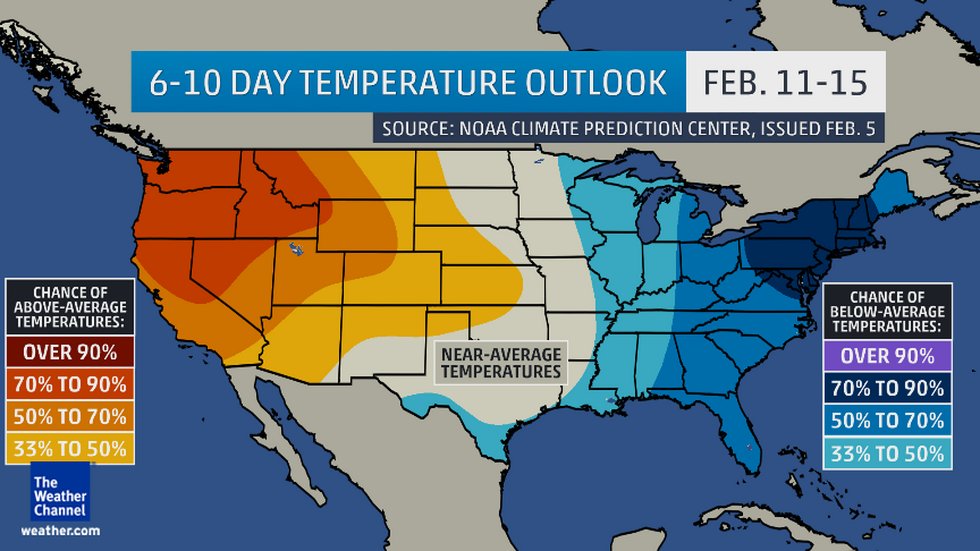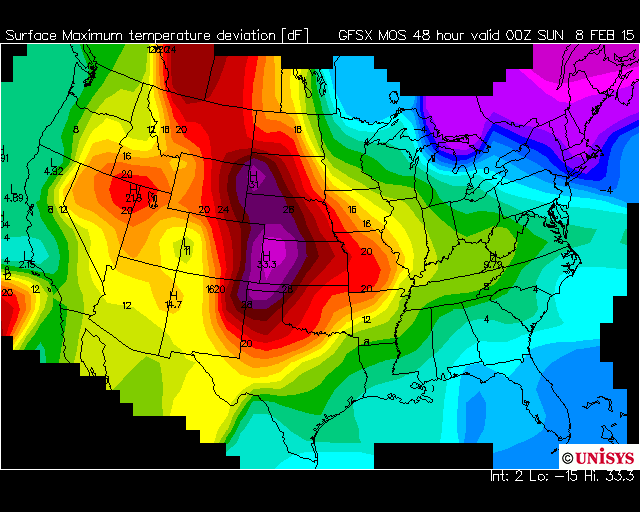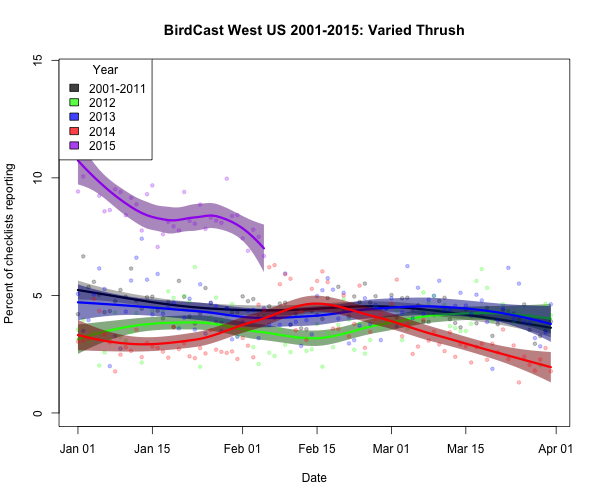In March 2012 much of the eastern US experience anomalously warm temperatures in March that correlated with record early arrivals of migrants. This weekend, across some of the central US and much of the western US, anomalously warm temperatures are forecast. The image below from The Weather Channel highlights the likelihoods of above average temperatures.

The image below shows the actual temperature departures, which are forecast to be quite impressive by Sunday.

Will these temperatures spawn early movements of raptors like Rough-legged Hawk and Northern Harrier? Will blackbirds be the species on the move? Are American Tree Sparrows vacating the Plains earlier than usual this month? The Varied Thrush show in California (and some other parts of the West) in Fall 2014 and winter 2015 has been anomalous in and of itself – will some of these birds move during these unusually warm conditions? The image below shows several years of patterns in the daily changes in frequency of occurrence (and its 95% confidence interval) for this species from complete checklists submitted to eBird across the BirdCast West region. Notice that 2015 is far above the past years and the 2001-2011 mean and that 2015 patterns seem to be drifting back to more normal reporting levels.

Warmth in March and warmth in February may be very different factors contributing to variation in the movements of early spring migrants. It is VERY early for any migrants to be on the move. So, whether birds will migrate during this pulse of warmth remains to be seen (and maybe what we will see is simply a pulse of increased detection of inspired and newly vocal birds). Regardless . . . Team BirdCast says go birding to help us find out what actually happened! Occupy your favorite hawk watch or sky watch locations. Visit your ponds and lakes. Bird your favorite scrubby fields and patches. And then submit what you find to eBird to help us understand what, if anything, happens.




